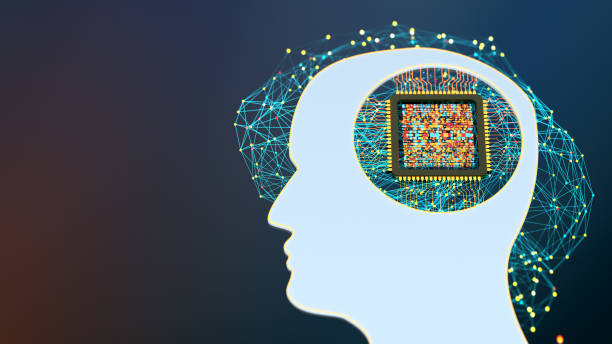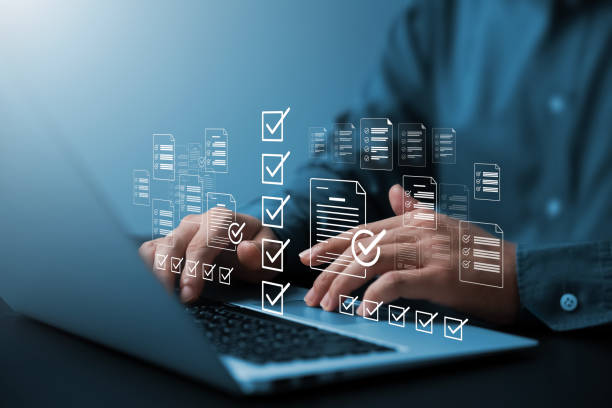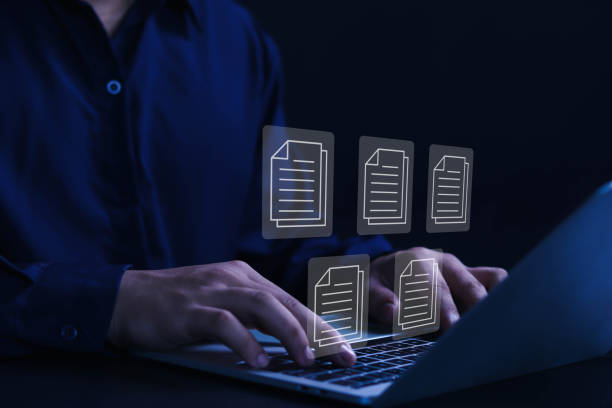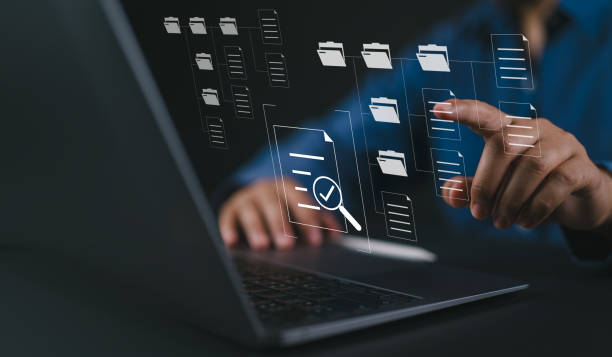What is an AI Robot? Definitions, Basic Concepts, and Applications
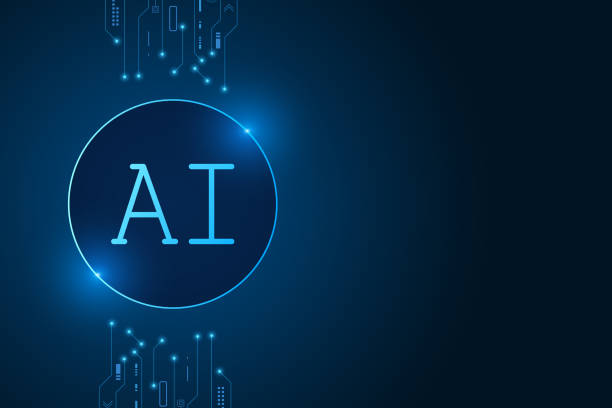
An #AI_Robot (Artificial Intelligence Robot) is a combination of two distinct fields: #Artificial_Intelligence and #Robotics.
Simply put, these robots are machines that, using AI algorithms and models, are capable of performing tasks that usually require human intelligence.
These tasks can include learning, reasoning, problem-solving, pattern recognition, natural language understanding, and even creativity.
AI-powered robots receive information from their surroundings through sensors (Wikipedia Sensor), process the data, and make decisions and act based on predefined algorithms.
The most significant difference between AI robots and traditional robots is their adaptability and learning capability.
Traditional robots are usually programmed to perform specific, predefined tasks and lose their effectiveness when encountering new conditions.
In contrast, AI robots can improve their performance and react to new conditions by analyzing data and learning from their experiences.
The applications of AI robots are vast and affect almost all industries and areas of life.
Key applications of these robots include:
- Industry: Process automation, quality control, inspection, and maintenance
- Medicine: Robotic surgery, disease diagnosis, provision of care services
- Customer Services: Answering questions, providing guidance, technical support
- Transportation: Autonomous vehicles, traffic management, logistics
- Agriculture: Crop harvesting, smart irrigation, plant health monitoring
- Finance: Fraud detection, investment consulting, risk management
The future of AI robots is very bright and promising.
With continuous advancements in AI and robotics, it is expected that these robots will play a more significant role in human lives and help solve many challenges facing humanity.
AI robots are powerful tools that can help improve the quality of human life and advance societies.
Are you tired of your e-commerce website not generating as much revenue as its potential? Rasaweb, specializing in professional e-commerce website design, solves this problem forever!
✅ Increased sales rate and revenue
✅ High loading speed and unparalleled user experience
⚡ Get free e-commerce website design consultation
Architecture and Main Components of an AI Robot: A Detailed Look at the Structure
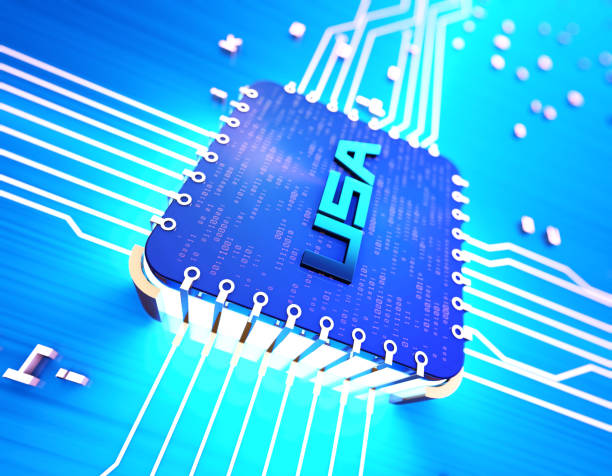
An AI robot is composed of several main components that work together to enable the performance of intelligent tasks.
These components include:
- Hardware: Includes physical parts of the robot such as the body, motors, sensors, and processors.
The selection of appropriate hardware depends on the type of tasks the robot needs to perform. - Sensors: Responsible for collecting information from the surrounding environment.
There are various types of sensors, including vision, auditory, tactile, temperature, and pressure sensors. - Processors: Responsible for processing information collected by sensors and executing AI algorithms.
Processors must have sufficient processing power to perform complex calculations. - Software: Includes AI algorithms, control programs, and user interface.
The AI robot’s software is its mastermind, determining how the robot should operate.
The architecture of an AI robot refers to how these components connect and interact with each other.
There are various architectures for AI robots, but a common one is the layered architecture.
In this architecture, components are organized into different layers, with each layer responsible for a specific task.
For example, one layer might be responsible for collecting information from sensors, another for processing information, and a third for decision-making and executing actions.
Using a layered architecture simplifies the design and development of AI robots and allows for changes and improvements to components without affecting other parts.
Furthermore, a layered architecture enables the use of deep learning techniques, which allow robots to learn from data and improve their performance.
An AI robot is a complex system composed of various cooperating components.
The choice of appropriate architecture and components depends on the type of tasks the robot needs to perform, as well as the available budget and resources.
AI Algorithms and Techniques in Robotics: Key Methodologies Review
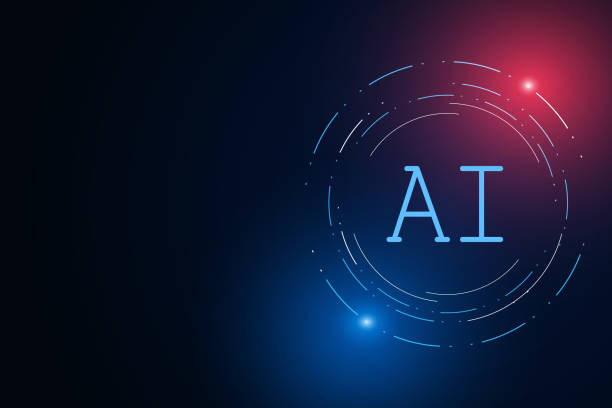
AI algorithms and techniques play a crucial role in the performance and efficiency of intelligent robots.
These algorithms enable robots to learn from their surroundings, make decisions, and perform complex tasks.
Some of the most important AI algorithms and techniques used in robotics include:
- Machine Learning: Allows robots to learn from data and improve their performance.
There are various types of machine learning algorithms, including supervised learning, unsupervised learning, and reinforcement learning. - Neural Networks: Computational models inspired by the structure of the human brain.
Neural networks are used for pattern recognition, classification, and prediction. - Deep Learning: A subset of machine learning that uses deep neural networks to learn complex features from data.
Deep learning is applied in various fields, including computer vision, natural language processing, and robotics. - Planning: Allows robots to create plans for performing complex tasks.
Planning algorithms typically use search and optimization methods to find the best plan. - Perception: Enables robots to understand their surrounding environment.
Perception includes object recognition, facial recognition, and natural language understanding.
The selection of the appropriate algorithm and technique depends on the type of tasks the robot needs to perform.
For example, a robot that needs to recognize objects might use neural networks and deep learning.
A robot that needs to create plans for complex tasks might use planning algorithms.
With continuous advancements in AI and robotics, it is expected that new algorithms and techniques will be developed for intelligent robots.
These algorithms and techniques will enable robots to perform more complex tasks and play a more significant role in human lives.
AI robots, by utilizing these algorithms, are capable of operating autonomously and intelligently.
| AI Algorithm | Application in Robotics | Advantages | Disadvantages |
|---|---|---|---|
| Machine Learning | Pattern Recognition, Prediction | Flexibility, Automation | Requires large data, Complexity |
| Neural Networks | Computer Vision, Language Processing | High Accuracy, Learnability | Time-consuming training, Requires computational resources |
| Deep Learning | Object Detection, Scene Understanding | High performance in complex tasks | Requires very large data |
| Planning | Pathfinding, Task Execution | Structured, Reliable | Low flexibility |
Practical Applications of AI Robots: From Industry to Daily Life
![]()
AI robots are currently used in a wide range of industries and daily life sectors.
With their unique capabilities, these robots can help improve efficiency, reduce costs, and increase safety.
Some practical applications of AI robots include:
- Industry: AI-powered industrial robots can perform tasks such as welding, painting, packaging, and inspection with high precision and speed.
These robots can also work in hazardous and difficult environments. - Medicine: Surgical robots can perform complex surgeries with precision and minimal invasiveness.
Pharmacist robots can dispense medications with high accuracy and speed.
Nurse robots can assist patients with daily tasks. - Agriculture: Agricultural robots can autonomously perform tasks such as planting, cultivating, harvesting, and irrigation.
These robots can also help monitor plant health and detect diseases. - Services: Service robots can provide customer services in hotels, restaurants, and stores.
These robots can perform tasks such as customer reception, order taking, and product delivery. - Transportation: Self-driving cars can transport passengers to their destinations without the need for a human driver.
Unmanned aerial vehicles (drones) can be used for parcel delivery, environmental monitoring, and search and rescue. - Finance: Investment advisor robots can assist clients in choosing the best investments.
Fraud detection robots can help identify suspicious financial activities.
These are just a few examples of the practical applications of AI robots.
With continuous advancements in AI and robotics, it is expected that the applications of these robots will expand further in the future.
AI robots have the potential to bring about fundamental transformations in various industries and improve the quality of human life.
Does your current website build the trust that potential customers should have in your business? If the answer is no, it’s time to have your professional and impactful corporate website with Rasaweb.
✅ Fully customized design tailored to your brand identity
✅ Increased lead generation and business credibility in the eyes of customers⚡ Contact us for a free consultation!
Challenges and Limitations of Intelligent Robots: Obstacles Ahead
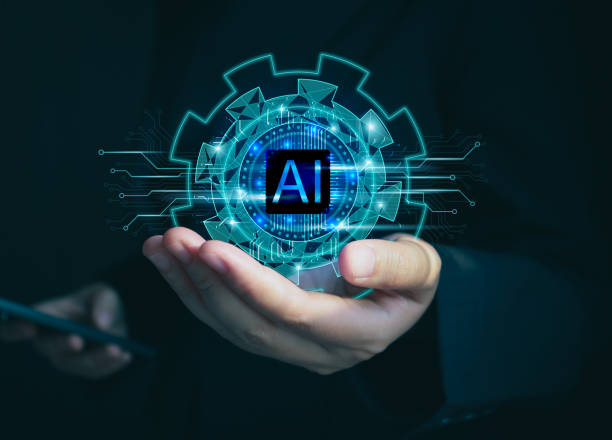
Despite the high potential of AI robots, there are also challenges and limitations in the development and use of this technology.
Some of the most important of these challenges and limitations include:
- Cost: The development and construction of AI robots is usually very costly.
This cost includes research and development expenses, component and equipment costs, and skilled labor costs. - Complexity: AI robots are complex systems that require various specializations.
Designing, developing, and maintaining these robots requires deep knowledge in the fields of AI, robotics, electronics, and software. - Security: AI robots can be vulnerable to cyberattacks.
Hackers can take control of robots and use them for malicious purposes. - Ethics: The use of AI robots can raise various ethical issues.
For example, questions arise regarding the accountability of robots in case of errors, as well as the impact of robots on employment and inequality. - Reliability: AI robots may not perform correctly under specific conditions.
For example, autonomous robots might face issues in adverse weather conditions or heavy traffic. - Social Acceptance: Some individuals might show resistance towards the use of AI robots.
This resistance could stem from fear of unemployment, security concerns, or ethical issues.
To overcome these challenges and limitations, concerted efforts from governments, companies, and researchers are needed.
These efforts should include investment in research and development, formulation of security and ethical standards, and education and public awareness campaigns.
AI robots, despite the challenges, still hold significant potential to bring about positive transformations in human lives.
The Future of AI Robots: Predictions and Prospects
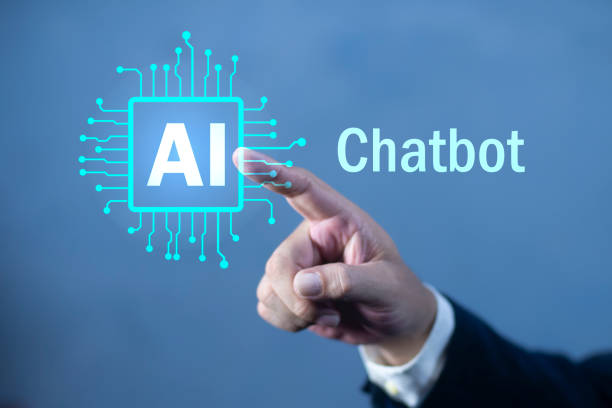
The future of AI robots appears very bright and promising.
With continuous advancements in AI, robotics, and related technologies, intelligent robots are expected to play a more significant role in human lives.
Some predictions and prospects regarding the future of AI robots include:
- Expansion of Applications: AI robots will be used in a wider range of industries and daily life sectors.
These robots will play a more significant role in fields such as medicine, agriculture, transportation, services, and manufacturing. - Increased Intelligence: AI robots will possess more advanced intelligent capabilities.
These robots will be able to perform more complex tasks, make better decisions, and interact more effectively with humans. - Cost Reduction: The cost of developing and manufacturing AI robots will decrease.
This will make robots more accessible to a greater number of companies and organizations. - Increased Social Acceptance: Public acceptance of AI robots will increase.
With growing public awareness and reduced concerns, people will have a more positive view towards using robots. - Human-Robot Collaboration: Humans and robots will increasingly collaborate.
Robots will perform repetitive and hazardous tasks, while humans will focus on creative and strategic tasks.
Overall, AI robots are expected to become a pervasive and essential technology in the future.
These robots have the potential to bring about fundamental transformations in various industries and improve the quality of human life.
However, to realize this potential, concerted efforts from governments, companies, and researchers are needed.
AI robots will play a more significant role in human lives in the future.
The Impact of AI Robots on the Job Market: Opportunities and Threats
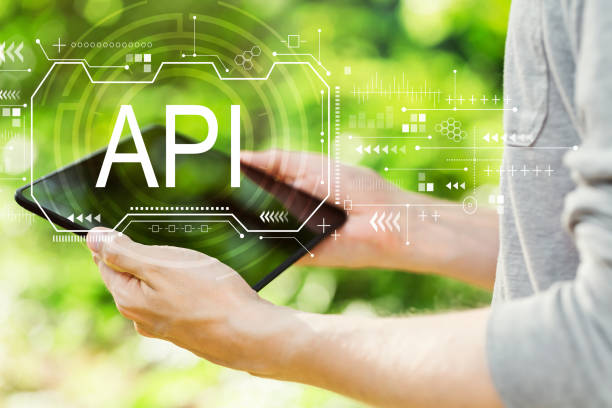
The development and widespread use of AI robots will have a significant impact on the job market.
This impact can create both opportunities and threats for the workforce.
Some of the most important impacts of AI robots on the job market include:
- Job Displacement: AI robots can replace many repetitive and routine jobs.
This could lead to unemployment in some industries and sectors. - Creation of New Jobs: The development and use of AI robots will also create new jobs.
These jobs include the design, development, manufacturing, maintenance, and support of robots. - Transformation of Job Roles: Many existing jobs will change in nature.
Workers will need to acquire new skills to collaborate with robots and leverage them. - Increased Productivity: The use of AI robots can increase productivity.
Robots can perform tasks with greater speed and accuracy and reduce human errors. - Cost Reduction: The use of AI robots can reduce labor costs.
This can help companies become more competitive.
To benefit from the opportunities created by AI robots and mitigate the threats arising from them, actions such as:
- Investment in Education and Reskilling: Workers need to learn new skills to collaborate with robots and leverage them.
- Support for Innovation and Entrepreneurship: Governments should support innovation and entrepreneurship in the fields of AI and robotics.
- Formulation of Support Policies: Governments should formulate support policies for workers who lose their jobs due to automation.
- Attention to Ethical Issues: Ethical issues related to the use of AI robots must be addressed.
AI robots will have a significant impact on the job market.
To address this impact, planning and actions from governments, companies, and workers are needed.
Key Considerations in Designing and Building an AI Robot

Designing and building an AI robot is a complex and multi-stage process that requires knowledge and expertise in various fields.
In this process, the following key points must be considered:
- Define the Goal: Before starting the design, the purpose of building the robot must be clear.
What task is the robot supposed to perform? What need will it address? - Select Appropriate Hardware: The robot’s hardware must be suitable for the tasks it is intended to perform.
Factors such as the robot’s size, weight, power, precision, and speed must be considered. - Choose Suitable Sensors: Sensors are responsible for collecting information from the environment.
The selection of appropriate sensors depends on the type of information the robot requires. - Select the Right Processor: The processor is responsible for processing information and executing AI algorithms.
The processor must have sufficient processing power to perform complex calculations. - Choose Appropriate Software: The robot’s software includes AI algorithms, control programs, and user interface.
The software must be designed so that the robot can effectively perform its tasks. - Testing and Evaluation: After building the robot, it must be thoroughly tested and evaluated.
It must be ensured that the robot functions correctly and meets all requirements. - Optimization: After testing and evaluation, the robot can be optimized.
The goal of optimization is to improve performance, reduce energy consumption, and increase the robot’s reliability.
In addition to these points, factors such as cost, time, and available resources must also be considered.
Designing and building an AI robot is an iterative process.
It may be necessary to modify and test the design multiple times to achieve a suitable robot.
An AI robot requires precise planning and attention to detail.
| Stage | Description | Key Points |
|---|---|---|
| Define Goal | Specify robot’s tasks | Precise definition of needs, scope of operation |
| Hardware Selection | Selection of physical components | Consider size, weight, power, accuracy |
| Sensor Selection | Selection of data collection tools | Consider type of information needed, sensor accuracy |
| Processor Selection | Selection of central processing unit | Consider processing power, energy consumption |
| Software Selection | Selection of algorithms and programs | Consider efficiency, reliability |
| Testing and Evaluation | Testing robot performance | Compliance check with requirements, problem identification |
| Optimization | Improving robot performance | Increased efficiency, reduced energy consumption |
Are you frustrated by the low conversion rate of your online store?
Rasaweb, with its professional e-commerce website design, is your definitive solution!
✅ Increase your sales and revenue
✅ Unparalleled user experience for your customers
⚡ Get a free consultation now!
Ethical Issues Surrounding AI Robots: Responsibility, Privacy, and Security

The development and use of AI robots raise important ethical issues that must be addressed.
Some of the most important of these issues include:
- Accountability: If an AI robot causes damage, who is responsible? Is it the robot’s manufacturer, the robot’s owner, or the robot itself?
- Privacy: AI robots can collect a lot of information about individuals.
How can individuals’ privacy be protected from the collection and use of this information? - Security: AI robots can be vulnerable to cyberattacks.
How can robots be protected against these attacks? - Bias: AI algorithms can unintentionally exhibit bias.
This bias can lead to unfair and discriminatory decisions. - Transparency: The decisions of AI robots must be transparent and explainable.
Individuals should be able to understand why a robot has made a particular decision. - Employment: The use of AI robots can lead to unemployment.
How can workers who lose their jobs due to automation be supported?
To resolve these ethical issues, new laws and regulations need to be formulated.
These laws and regulations should be designed to protect individuals’ rights while encouraging innovation and the development of AI robots.
Furthermore, public discussion and debate on these issues are needed.
All individuals should be able to express their views on the impact of AI robots on their lives.
AI robots should be designed and used in a way that benefits everyone.
Resources and References for Further Learning About AI Robots

For further learning about AI robots, various resources and references are available.
Some of these resources include:
- Books: Many books have been written about AI robots.
These books can provide comprehensive information on basic concepts, algorithms, applications, and ethical issues. - Articles: Scientific and specialized articles can provide up-to-date and accurate information on the latest advancements in AI robotics.
- Training Courses: Online and in-person training courses can help you learn the necessary skills for designing, building, and using AI robots.
- Websites and Blogs: There are many websites and blogs dedicated to AI robots.
These websites and blogs can provide useful news, articles, and tutorials. - Conferences and Seminars: Conferences and seminars are excellent opportunities to learn from experts and exchange ideas with other AI robot enthusiasts.
- Practical Projects: Undertaking practical projects can help you apply your knowledge and skills in AI robotics.
To begin learning, you can use free online resources such as websites, blogs, and educational videos.
Additionally, you can visit libraries and universities and utilize their printed and electronic resources.
By dedicating time and effort, you can acquire the necessary knowledge and skills to become an expert in the field of AI robots.
AI robots are an exciting and challenging field with significant potential for advancement.
Frequently Asked Questions
| Row | Question | Answer |
|---|---|---|
| 1 | What is an AI robot? | An AI robot is a machine capable of understanding, reasoning, learning, and problem-solving, and can perform complex tasks with relative autonomy. |
| 2 | What are the most important applications of AI robots? | Key applications include industrial manufacturing, customer services (chatbots), medicine and surgery, autonomous transportation, space exploration, and military affairs. |
| 3 | What is the main difference between an AI robot and a regular robot? | A regular robot merely follows programmed instructions, whereas an AI robot can learn from data, make decisions, and adapt itself to new environments. |
| 4 | How do AI robots learn? | They learn by identifying patterns and improving their performance through machine learning algorithms (such as deep learning, reinforcement learning) and processing vast amounts of data. |
| 5 | Can AI robots have emotions? | Currently, AI robots do not possess real emotions in the human sense. They can imitate or detect emotions but do not understand or experience them. |
| 6 | What are the current limitations of AI robots? | Limitations include the need for large amounts of data, inability to understand abstract concepts, lack of true creativity, ethical issues, and challenges in generalization to new environments. |
| 7 | What is the role of AI in the development of Humanoid robots? | AI helps humanoid robots to walk, maintain balance, perceive their surroundings, interact with humans, and perform complex tasks. |
| 8 | How is the future of AI robots predicted? | It is predicted that AI robots will become smarter, more autonomous, and capable of performing more complex tasks in daily life and industry, with increased interaction with humans. |
| 9 | Can AI robots replace all human jobs? | It is unlikely that all human jobs will be replaced. Robots will take over many repetitive and dangerous tasks, but jobs requiring creativity, empathy, and ethical judgment will remain. |
| 10 | What ethical and social challenges arise with the expansion of AI robots? | Challenges include issues related to privacy, data security, ethical decision-making by robots, impact on employment, and accountability in case of errors. |
And other advertising agency services from Rasa Web in the field of advertising
- Smart Content Strategy: A novel service for enhanced campaign management through custom programming.
- Smart Sales Automation: A fast and efficient solution for campaign management focusing on marketing automation.
- Smart Data Analysis: A novel service to increase user engagement through Google Ads management.
- Smart SEO: An effective tool for digital branding with attractive UI design.
- Smart Data Analysis: A combination of creativity and technology to attract customers through custom programming.
And over hundreds of other services in internet advertising, advertising consultation, and organizational solutions
Internet Advertising | Advertising Strategy | Advertorial
Resources
AI Robots: The Future is Coming
Comprehensive Guide to Artificial Intelligence and Robotics
The Impact of AI on Society and Future Robots
Recent Developments in AI and Robotics
? With Rasaweb Afarin, build the future of your business in the digital world. By offering innovative digital marketing solutions, from personal and corporate website design to SEO and targeted advertising, we help you keep your brand at its peak. With us, have a powerful and influential presence in the online space.
📍 Tehran, Mirdamad Street, next to Bank Markazi, Kazeroon Janoubi Alley, Ramin Alley, No. 6

